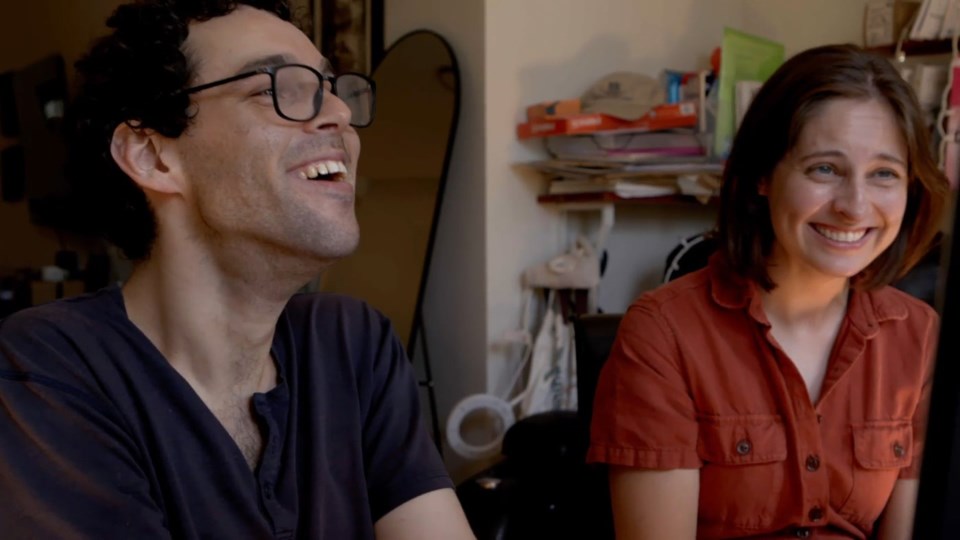Reid Davenport says he began making documentaries to confront the ableism he faced every day.
When a college adviser discouraged him from applying for a study abroad program in Florence because the city wasn’t wheelchair accessible, Davenport responded by picking up a camera. The resulting film, 2013’s “Wheelchair Diaries,” explored the lack of accessibility in Europe.
“It feels good to take pain and turn it into art. It’s cathartic and relieves some of the difficult memories,” says Davenport, who has cerebral palsy.
The New York-based filmmaker now counts himself among a growing wave of creators challenging how people with disabilities are seen and spoken about in media.
That shift is especially apparent at this year’s Hot Docs festival, where stories about disability rights are in the spotlight. Programming director Heather Haynes says the festival received a record number of submissions centering voices of people with disabilities.
Among the highlights is the international premiere of Davenport’s “Life After,” which delves into the complexities of assisted suicide from a disability-rights lens, examining Canada’s medical assistance in dying (MAID) program.
“Disabled people have been the subject of documentaries since the inception of documentaries, but those documentaries have literally subjugated them,” says Davenport.
“I think there's a groundswell of disabled people who want to take the narrative back and are sick of talking about the physicalities of their disabilities, and would rather talk about the unnecessary ableism they face that is embedded in society.”
Other standouts are Shoshannah Stern’s “Marlee Matlin: Not Alone Anymore,” a portrait of the Oscar-winning Deaf actress and her trailblazing journey, and the international premiere of Nyle DiMarco and Davis Guggenheim’s “Deaf President Now!,” which revisits a 1988 student-led protest in Washington, D.C. that became a landmark moment for accessibility rights in the U.S.
Homegrown selections include Lulu Wei’s short “A Stop Gap Measure,” which follows Toronto disability activist Luke Anderson on his fight to make Canada more accessible.
Programmers and filmmakers say there is a larger shift in the documentary world that's fuelled by increased access, emerging support programs and long-overdue recognition of those who’ve been left out of the frame.
Elspeth Arbow, a key programmer behind this year’s Hot Docs slate, notes much of that momentum can be traced back to 2020, when the murder of George Floyd in Minneapolis by a police officer sparked a cultural reckoning around race, power and representation.
“There was certainly this swell of interest in supporting equity-deserving groups or people that have been systematically disadvantaged or kept out of able-bodied, hegemonic, white-led organizations. A lot of that has fallen away over the past five years, but a lot of it has stayed, too,” Arbow says.
The New Brunswick native cites the CBC’s AccessCBC program and the National Screen Institute’s Disabled Producers Lab as recent Canadian initiatives offering mentorship and financial support to disabled creators.
Arbow, who lives with cystic fibrosis and has had two double lung transplants, is operations manager of the Disability Screen Office, a non-profit that launched in 2022 with the goal of eliminating accessibility barriers in the Canadian screen industry.
She notes that people with disabilities have long been portrayed on screen through a lens of “spectacle and voyeurism,” but the community has now reached a “tipping point,” no longer willing to accept those narratives.
“Now that people are listening to disabled folks, we can say, ‘The representation we have is really not very good. And if you call us disrespectful or unappreciative, we'll just make our own films,’” Arbow says.
Anderson credits the 2020 documentary “Crip Camp” as a galvanizing moment. Helmed by James LeBrecht and Nicole Newnham, the film traces the origins of the disability rights movement and, according to Anderson, helped bring much-needed attention to the fight for inclusion.
“A Stop Gap Measure” chronicles Anderson’s creation of the StopGap Foundation, a non-profit that installs brightly colored ramps for single-step storefronts across Canada to raise awareness about the need for a barrier-free society.
“The disability community isn’t going to settle for HR policies that are discriminatory, built-in environments that say that we don't belong or attitudinal spaces that aren't inclusive,” says Anderson, who has used a wheelchair since a mountain biking injury in 2002.
“We're tired of not being heard or seen. And there's a real close-knit community of disability activists who are really motivated to speak up.”
In “Life After,” Davenport interviews Canadian Michal Kaliszan, who, after losing his mother and struggling with limited care options due to his spinal muscular atrophy, considers MAID.
Davenport says his film is truly about how “radically under-supported” disabled people are in modern society.
“I think every disabled person experiences ableism, and it’s so acute that we have a disproportionate amount of disabled people who either commit suicide or seek suicide,” he says.
“One of the old tenets of disability studies is that disabled people aren't impaired by their bodies, but they're impaired by society's reactions to their bodies. That's all you really need to know.”
This report by The Canadian Press was first published April 24, 2025.
Alex Nino Gheciu, The Canadian Press




